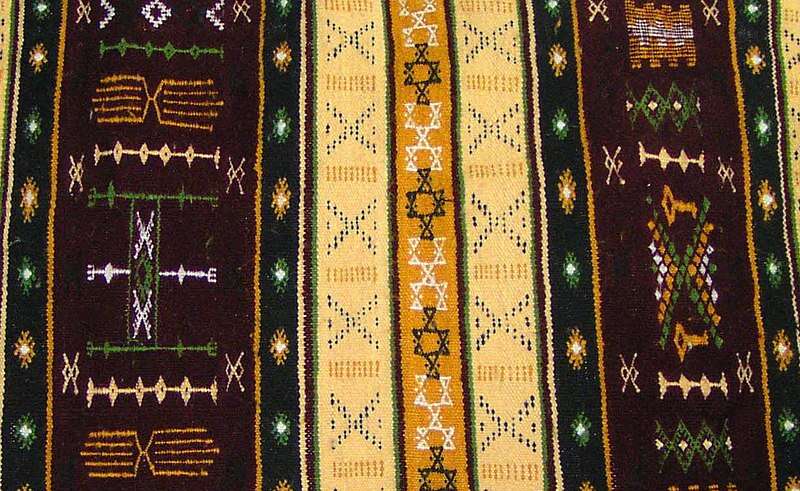
During the Roman period, the area of what is now Tunisia enjoyed a huge development. The economy, mainly during the Empire, boomed: the prosperity of the area depended on agriculture. Called the Granary of the Empire, the area of actual Tunisia and coastal Tripolitania, according to one estimate, produced one million tons of cereals each year, one quarter of which was exported to the Empire. Additional crops included beans, figs, grapes, and other fruits. By the 2nd century, olive oil rivaled cereals as an export item. In addition to the cultivations and the capture and transporting of exotic wild animals from the western mountains, the principal production and exports included textiles, marble, wine, timber, livestock, pottery such as African Red Slip, and wool.
Middle Ages
Sometime between the second half of the 7th century and the early part of the 8th century, Arab Muslim conquest occurred in the region. They founded the first Islamic city in Northwest Africa, Kairouan. It was there in 670 AD that the Mosque of Uqba, or the Great Mosque of Kairouan, was constructed. This mosque is the oldest and most prestigious sanctuary in the Muslim West with the oldest standing minaret in the world. it is also considered a masterpiece of Islamic art and architecture.
The Arab migration to the Maghreb began during this time. The region in its entirety was taken in 695, retaken by the Byzantine Eastern Romans in 697, but lost permanently in 698. The transition from a Latin-speaking Christian Berber society to a Muslim and mostly Arabic-speaking society took over 400 years (the equivalent process in Egypt and the Fertile Crescent took 600 years) and resulted in the final disappearance of Christianity and Latin in the 12th or 13th century. The majority of the population were not Muslim until quite late in the 9th century. The Arab governors of Tunis founded the Aghlabid dynasty, which ruled Tunisia, Tripolitania, and eastern Algeria from 800 to 909. Tunisia flourished under Arab rule when extensive systems were constructed to supply towns with water for household use and irrigation that promoted agriculture (especially olive production).
The depredation of the Tunisian campaigns by the Banu Hilal, a warlike Arab tribe encouraged by the Fatimids of Egypt to seize Northwest Africa, sent the region’s rural and urban economic life into decline. Consequently, the region underwent rapid urbanization as famines depopulated the countryside and industry shifted from agriculture to manufacturing. The main Tunisian cities were conquered by the Normans of Sicily under the Kingdom of Africa in the 12th century, but following the conquest of Tunisia in 1159–1160 by the Almohads the Normans were evacuated to Sicily. The Almohads initially ruled over Tunisia through a governor, usually a near relative of the Caliph. Despite the prestige of the new masters, the country was still unruly, with continuous rioting and fighting between the townsfolk and wandering Arabs and Turks. The greatest threat to Almohad rule in Tunisia was the Banu Ghaniya, relatives of the Almoravids, who from their base in Mallorca tried to restore Almoravid rule over the Maghreb. Around 1200, they succeeded in extending their rule over the whole of Tunisia until they were crushed by Almohad troops in 1207. After this success, the Almohads installed Walid Abu Hafs as the governor of Tunisia. Tunisia remained part of the Almohad state, until 1230 when the son of Abu Hafs declared himself independent.
Ottoman Tunisia
In the last years of the Hafsid dynasty, Spain seized many of the coastal cities, but these were recovered by the Ottoman Empire. The first Ottoman conquest of Tunis took place in 1534 under the command of Barbarossa Hayreddin Pasha, the younger brother of Oruç Reis, who was the Kapudan Pasha of the Ottoman Fleet during the reign of Suleiman the Magnificent. However, it was not until the final Ottoman reconquest of Tunis from Spain in 1574 under Kapudan Pasha Uluç Ali Reis that the Ottomans permanently acquired the former Hafsid Tunisia, retaining it until the French conquest of Tunisia in 1881.




